Историческая филология. Рубрика в журнале - Материалы по археологии и истории античного и средневекового Причерноморья
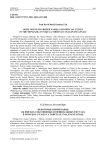
Some notes on proper names and official titles in the mongol-un niuca tobciyan: inal/inanca/inaq
Статья научная
Mongɣol-un niɣuca tobčiyan, the “Secret History of the Mongol,” is the only work of its kind from the era of the Mongolian world Empire, it has a complex history as a text but was originally written in (Middle) Mongolian. It is a linguistically very rich source, not only for the Mongols but for many other groups who are seen allied with or appear fighting against the Mongols, the latter bearers of the power of Eternal Heaven and of the potent sanction of the ancestors. Thus, in addition to overt political assertions to guide the new Mongolian Empire, and its rulers’ managers, and commanders, and containing carefully selected and crafted statements of events of myth and history. These are designed to buoy up the imperial state of affairs and Mongolian society in general, Adapted documents and even works of a literary character are among the devices used to this end. Given its nature, it is only to be expected too that the “Secret History” also is a rich source of a full history behind the scenes of told by the personal names and epithets, and titles of Mongols, but also the names, epithets, and titles of many non-Mongols who had military, political and diplomatic contacts with the Mongols in the early 13th century. These names, epithets, and titles tell entirely their own story. Thus, grasping their potential importance, these names, epithets and, titles have been studied by many researchers, from a variety of perspectives.Here, we, a Mongolist and a Turkologist, have banded together, to follow in the footsteps of these investigators who have gone before, offering our historical-comparative analysis of the related words inal/inanča/inaq, and their semantic and morphological structure, examined within a larger context of the “Secret History” and its monumental, literary linguistic and cultural world. Our analysis will be primarily based on the “Secret History,” but also on other historical texts and documents, as well as information offered by Mongolists, but also provided by those in closely related disciplines, in Turkology in particular, for example, this is only natural since Mongols and Turks closely interacted in building an empire, and the new, often mixed cultures that emerged from it.
Бесплатно
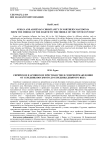
Статья научная
Syrian and Armenian influence has been felt in the Old Bulgarian culture by different scholars, such as archaeologists and architecture historians as well as historians of the earliest Bulgarian writing and manuscripts. Some of them, looking for a possible source of this influence, pointed to resettling a large Syrian and Armenian population from the former Roman Armenia's lands in the Caliphate to northern Macedonia in the 750s. An exhaustive overview of the literary sources related to this resettlement (in Greek, Syriac, Arabic, and Armenian) demonstrates that took place a translatio urbis of Theodosiopolis/Karin (modern Erzurum) together with a great part of Christian population of the Great Armenia and Melitene. The immigrants created new cities where preserved and developed their local cults, including the famous cult of the Fifteen Martyrs of Theodosiopolis/Strumica.
Бесплатно
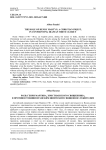
The role of Henry Martyn, a Christian priest, in confronting Iranian Shiite clerics
Статья научная
Henry Martyn (1781-1812), an English priest, during his tenure in India, decided to introduce Christianity not only among the Hinduists, but also among the Arabs and Persians, so he began translating the New Testament into Arabic and Persian to this end. In 1811, being a little familiar with Persian language and literature, he came to Iran and showed his translation to Iranian scholars who found it rather childish. Martyn resumed translating and had another trip to Shiraz to improve his Persian language skills. While in Shiraz, he confronted and challenged the Shiite clerics. His intention was to propagate Christianity, and he thus aimed more to invite and challenge the youth. Meanwhile, several treatises were written in response to his questions and doubts about Islam, and he also tried to refute these treatises in due course. The research was based on the archival record, and its main goal was to reveal and interpret the content of the messages of the Shiite clerics in response to Martyn's judgments as well as the content of Martyn's own responses to them. It turns out that during these religious debates and the opinion exchange between Islamic treatises and Martyn's writings, the missioner's utterances became less and less valuable to the Iranians, and especially to those who accepted his views, but he did not give up until Mohammad Reza Ibn Mohammad Amin Hamedani wrote the treatise “Guidance of the Misguided” to dispel Martyn's doubts. This treatise was the culmination of Martyn's anti-Islamic rhetoric in Iran. Failing to fulfill his religious mission, he left Iran without achieving his main goal of meeting Fath Ali Shah and Abbas Mirza to present the Persian version of the New Testament to them with his own hands, and soon after, on his way back home, he died in Turkey.
Бесплатно
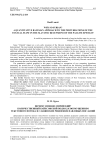
Статья научная
Some “Oriental” impact on a very early recension of the Slavonic translation of the five Pauline epistles is demonstrated. The most natural interpretation of this fact is that the Greek originals used for the Slavonic translation were those widespread outside the borders of the ninth-century Byzantine Empire. Moreover, there are some traces of additional editing of the translations from Greek against some Syriac version(s), in the same manner as in roughly contemporaneous Melkite translations of the New Testament from Greek into Arabic. Both I (“Ancient”) and II (“Preslav”) recensions share the above features that, therefore, are to go back to their common archetype, that is, an even more “ancient” recension. Only the earliest Ethiopic version (EthGr) shows an affinity with the Slavonic material comparable to that of the Syriac material. This fact must be interpreted as an affinity of the early Slavonic version with Greek recensions that were circulating before the seventh-century Arab invasion. The quantitative method proposed in this paper is dedicated to comparison of two competing hypotheses concerning the textual flow of a highly contaminated tradition. The method has the following preconditions and limitations: (1) the total number of possible hypotheses must be previously reduced to two: that a specific source of contamination existed or not; (2) in the present (simplest) modification of the method, the hypothesis about the presence of a discussed source of contamination must additionally imply a high value of the signal-to-noise ratio (> 0.5), that is, that this hypothetical source, if it actually existed, was the major source of contaminations of a specific kind (defined above as “perturbations”).
Бесплатно
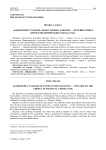
«Καθρεπτησ γυναικων» Константина Дапонте - путешествие в Крым в политических стихах (1746)
Статья научная
Фанариот Константин (Кесарий) Дапонте бежал в 1746 г. в Крым, где он по рекомендации Константина Маврокордатоса, господаря Валахии, был благосклонно принят ханом Селимом II Гираем. О своем пребывании он написал поэму в диалогах, в т.н. политических стихах, которую он вложил в свое огромное «Καθρέπτης γυναικών», то есть в «Зерцало жен». Дапонте - первый (ранний) современный греческий писатель, который сделал Крым доступным для греков своего времени. Он также поднял осознание того, что это место, хотя и татарское, но и действительно греческое место, - хотя и без ссылки на греческую древность и византийские времена. Поскольку работа была очень распространена, его описание Крыма весьма интересно. Дапонте не пишет ничего замечательного о политической ситуации в Крыму, хотя и предоставил своим соотечественникам полезные сведения. Интересны замечания Дапонтеса о грубой красоте монастыря, которая контрастирует с аркадными прибрежными лугами, а также о греческом населении, живущем близ Бахчисарая.
Бесплатно
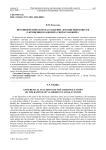
Противоеретическое наставление летописной повести о крещении Владимира Святославовича
Статья научная
В дискуссии по вопросу летописного исповедания существуют две основные гипотезы: гипотеза случайного генезиса его «подобосущной» терминологии и гипотеза намеренного еретического (арианского или полуарианского) редактирования его источника - исповедания Михаила Синкелла Иерусалимского. Обе гипотезы отождествляют «подобосущную» терминологию славянского текста с известной ересью. Анализ же разночтений позволяет утверждать, что слово «подобосоущьнъ» славянские книжники использовали в значении «той же самой, такой же сущности». А характер и направленность внесенных летописцем содержательных изменений указывает на антитринитаристское понимание единой сущности Бога, где Ипостаси мыслятся как свойства и«образы» единого Бога, понимаемого им как Бог Отец. Летописец заменил «подобосущным» исповеданием основной текст прежнего исповедания - составной части противоеретического цикла, включавшего Никео-Цареградский символ веры. Одновременно он ввел в летопись антилатинскую статью. В то время греческие и славянские полемисты обвиняли латинян в связи с проблемой Filioque в антитринитаризме. Отмежевываясь от обычаев и обрядов Западной церкви, летописец в какой-то степени камуфлировал еретическую сущность собственного, по сути, антитринитарного исповедания.Ключевые слова: исповедание Михаила Синкелла, летописный символ веры, антитринитарные ереси, антилатинская полемика.
Бесплатно
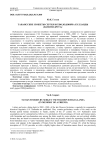
Танаисские сюжеты Сергея Всеволодовича Кулланды (памяти друга)
Статья научная
Публикуются письма и заметки покойного московского историка, специалиста по сравнительно-историческому языкознанию С.В. Кулланды, относящиеся к 2002-2003 гг. Тексты содержат предварительные результаты изучения им иранской ономастики Танаиса римского времени, преимущественно II в. н. э. Основные наблюдения и предположения С.В. Кулланды сводятся к следующему: 1) подсчёты процентных соотношений греческих и иранских, а среди последних сарматских и несарматских имён, сделанные некоторыми исследователями-антиковедами, не вполне достоверны, ибо основаны на ошибочных критериях, тогда как имеются фонетические критерии отделения скифских имен от сарматских, а также «ранних» сарматских от «поздних»;большое количество сарматских имён действительно появляется в эпиграфике Танаиса только с середины II в. н. э., а в известной надписи 155 г. н. э. их доля несколько выше, чем считалось ранее;сарматские имена есть в надписях первой половины II в. н. э., поэтому ономастика не позволяет утверждать, что выявленный археологами позднесарматский разгром города произошёл до 155 г. н. э.; 4) в Танаисе прослеживаются следы двух диалектов сарматского языка, один из которых - тот, на котором, вероятно, говорили носители среднесарматской культуры - фонетически близок позднейшему осетинскому языку. Комментируя лингвистические наблюдения С.В. Кулланды, автор публикации приходит к выводу, что они подтверждаются данными археологии (Танаис, степные сарматские культуры, аланская культура Кавказа) или, во всяком случае, не противоречат им. Можно надеяться, что историки и языковеды-иранисты заинтересуются проблемами, поставленными С.В. Кулландой на материале иранской ономастики Танаиса, и в перспективе предложат способы и варианты их решения.
Бесплатно

